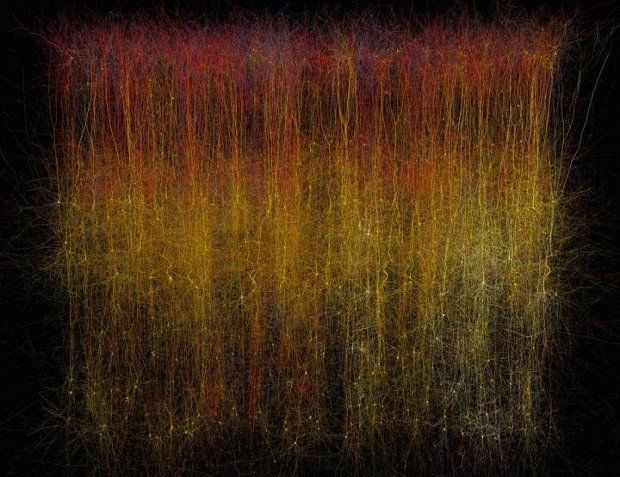In the old days, medical experts had to chop and hack to learn basic anatomy. Even today, doctors still need to dissect organs and other body parts to get an idea of their makeup. Except that, with the help of technology, such experiments are moving into the realm of virtual reality.
In a study published in the science journal Cell this past Thursday, October 8, a team of researchers working with Switzerland's École Polytechnique Fédérale de Lausanne detail their work trying to create a virtual replica of rat brain slice.
The digital reconstruction of the rodent brain section is far from complete. However, after having spent about 10 years working on this little project of theirs, the scientists feel confident to unveil a first draft.
This is one very complex brain slice
The brain section the research team wishes to recreate in virtual reality in its entirety is a neurocortex slice. The scientists want to reconstruct each and every neuron and connection, which is why it took them a decade just to come up with a draft.
Even creepier, this sketch that they unveiled earlier this week isn't what some would call plain either, not by a long shot. Au contraire, it packs an astounding 31,000 neurons of 207 different types and neatly arranged in as many as 55 layers.
It also documents around 40 million synapses and 2,000 connections between brain cells. The neurons all behave differently, firing and interpreting signals depending on their type, Science Daily explains.
Keep in mind, this complex virtual system is merely a reconstruction of a brain. What's more, it's not even a complete replica. A real brain is far more complex than this, which explains why experts are yet to figure out how exactly this organ works.
Why bother to create a virtual brain?
The École Polytechnique Fédérale de Lausanne researchers expect virtual brains like the one they're now working on putting together will one day help medical experts have an easier time studying the anatomy and the physiology of this very complex organ.
What's more, they argue digital brain replicas could be used to simulate the potential effects of new drugs before actually going ahead and injecting them into patients.
“Heroic efforts are currently being made to define all the different types of neurons in the brain, to measure their electrical firing properties, and to map out the circuits that connect them to one another. These painstaking efforts are giving us a glimpse into the building blocks and logic of brain wiring,” the research team explain the importance of their work.

 14 DAY TRIAL //
14 DAY TRIAL // 

